#queen consort of france
Explore tagged Tumblr posts
Text
A central element of the myth of [Eleanor of Aquitaine] is that of her exceptionalism. Historians and Eleanor biographers have tended to take literally Richard of Devizes’s conventional panegyric of her as ‘an incomparable woman’ [and] a woman out of her time. […] Amazement at Eleanor’s power and independence is born from a presentism that assumes generally that the Middle Ages were a backward age, and specifically that medieval women were all downtrodden and marginalized. Eleanor’s career can, from such a perspective, only be explained by assuming that she was an exception who rose by sheer force of personality above the restrictions placed upon twelfth-century women.
-Michael R. Evans, Inventing Eleanor: The Medieval and Post-Medieval Image of Eleanor of Aquitaine
"...The idea of Eleanor’s exceptionalism rests on an assumption that women of her age were powerless. On the contrary, in Western Europe before the twelfth century there were ‘no really effective barriers to the capacity of women to exercise power; they appear as military leaders, judges, castellans, controllers of property’. […] In an important article published in 1992, Jane Martindale sought to locate Eleanor in context, stripping away much of the conjecture that had grown up around her, and returning to primary sources, including her charters. Martindale also demonstrated how Eleanor was not out of the ordinary for a twelfth-century queen either in the extent of her power or in the criticisms levelled against her.
If we look at Eleanor’s predecessors as Anglo-Norman queens of England, we find many examples of women wielding political power. Matilda of Flanders (wife of William the Conqueror) acted as regent in Normandy during his frequent absences in England following the Conquest, and [the first wife of Henry I, Matilda of Scotland, played some role in governing England during her husband's absences], while during the civil war of Stephen’s reign Matilda of Boulogne led the fight for a time on behalf of her royal husband, who had been captured by the forces of the empress. And if we wish to seek a rebel woman, we need look no further than Juliana, illegitimate daughter of Henry I, who attempted to assassinate him with a crossbow, or Adèle of Champagne, the third wife of Louis VII, who ‘[a]t the moment when Henry II held Eleanor of Aquitaine in jail for her revolt … led a revolt with her brothers against her son, Philip II'.
Eleanor is, therefore, less the exception than the rule – albeit an extreme example of that rule. This can be illustrated by comparing her with a twelfth century woman who has attracted less literary and historical attention. Adela of Blois died in 1137, the year of Eleanor’s marriage to Louis VII. […] The chronicle and charter evidence reveals Adela to have ‘legitimately exercised the powers of comital lordship’ in the domains of Blois-Champagne, both in consort with her husband and alone during his absence on crusade and after his death. […] There was, however, nothing atypical about the nature of Adela’s power. In the words of her biographer Kimberley LoPrete, ‘while the extent of Adela’s powers and the political impact of her actions were exceptional for a woman of her day (and indeed for most men), the sources of her powers and the activities she engaged in were not fundamentally different from those of other women of lordly rank’. These words could equally apply to Eleanor; the extent of her power, as heiress to the richest lordship in France, wife of two kings and mother of two or three more, was remarkable, but the nature of her power was not exceptional. Other noble or royal women governed, arranged marriages and alliances, and were patrons of the church. Eleanor represents one end of a continuum, not an isolated outlier."
#It had to be said!#eleanor of aquitaine#historicwomendaily#angevins#my post#12th century#gender tag#adela of blois#I think Eleanor's prominent role as dowager queen during her sons' reigns may have contributed to her image of exceptionalism#Especially since she ended up overshadowing both her sons' wives (Berengaria of Navarre and Isabella of Angouleme)#But once again if we examine Eleanor in the context of her predecessors and contemporaries there was nothing exceptional about her role#Anglo-Saxon consorts before the Norman Conquest (Eadgifu; Aelfthryth; Emma of Normandy) were very prominent during their sons' reigns#Post-Norman queens were initially never kings' mothers because of the circumstances (Matilda of Flanders; Edith-Matilda; and#Matilda of Boulogne all predeceased their husbands; Adeliza of Louvain never had any royal children)#But Eleanor's mother-in-law Empress Matilda was very powerful and acted as regent of Normandy during Henry I's reign#Which was a particularly important precedent because Matilda's son - like Eleanor's sons after him - was an *adult* when he became King.#and in France Louis VII's mother Adelaide of Maurienne was certainly very powerful and prominent during Eleanor's own queenship#Eleanor's daughter Joan's mother-in-law Margaret of Navarre had also been a very powerful regent of Sicily#(etc etc)#So yeah - in itself I don't think Eleanor's central role during her own sons' reigns is particularly surprising or 'exceptional'#Its impact may have been but her role in itself was more or less the norm
395 notes
·
View notes
Text

Madeleine of France, Queen of Scotland (1520-1537).
#treaty of rouen#kingdom of scotland#house of stewart#rìogachd na h-alba#house of stuart#kinrick o scotland#full length portrait#royaume d’ecosse#royaume de france#maison de valois#Valois angoulême#summer queen#fille de france#queen consort#reine d’ecosse#madeleine of france#full-length portrait#house of valois#royalty
16 notes
·
View notes
Text

Queen Isabel of Bourbon Equestrian
Artist: Diego Velázquez
Genre: Portrait
Date: 1635
Isabella of Bourbon was born Elisabeth of France, the eldest daughter of King Henri IV and sister of Queen Henrietta Maria, wife of Charles I. In 1615 she married Philip IV, then Prince of Asturias and adopted the Spanish form of her name, Isabella. She reigned as Queen consort between 1621 and 1644. Known for her beauty and intelligence, Isabella was popular among her Spanish subjects and governed as regent during the Catalan Revolt. She died in 1644 aged forty-one.
#isabel de bourbon#equestrian#landscape#horse#diego velazquez#elisabeth of france#spanish queen consort#spanish royal family#17th century art#spanish culture#phillip iv
15 notes
·
View notes
Text
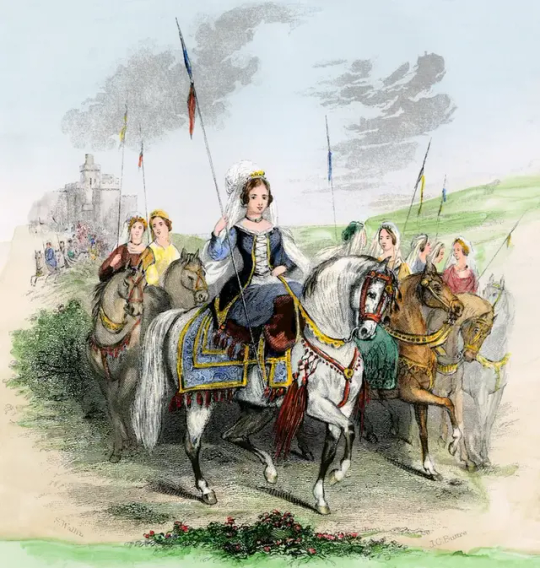
Queen Eleanor of Aquitaine (1124-1204). American school.
#engravings#eleanor of aquitaine#queen of france#vive la reine#queen of england#god save the queen#duchess of aquitaine#crusades#crusader#Aliénor d'Aquitaine#Éléonore d'Aquitaine#Alienòr d'Aquitània#House of Poitiers#maison de poitiers#Ramnulfids#duchy of aquitaine#duchy of gascony#queen consort#eleonore de guyenne#on horseback#equestrian portrait
7 notes
·
View notes
Text
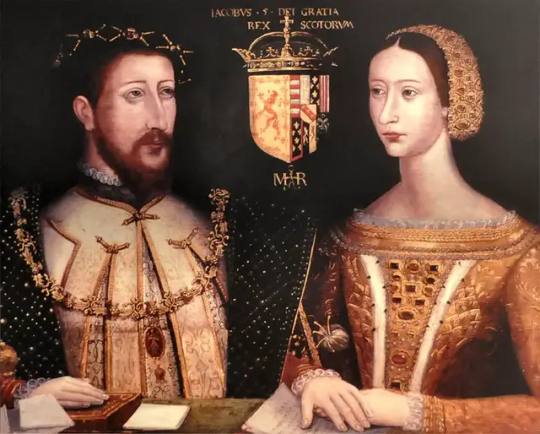
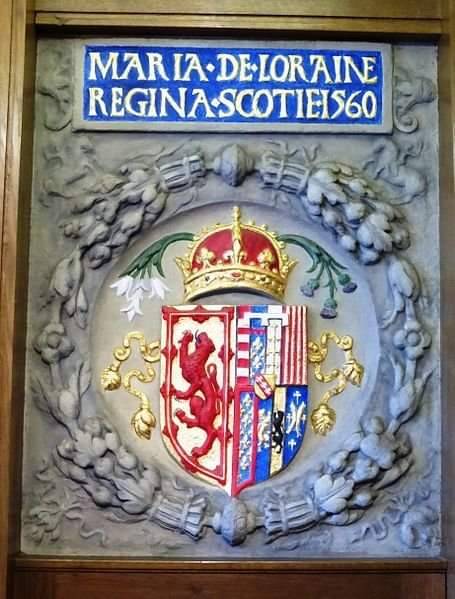

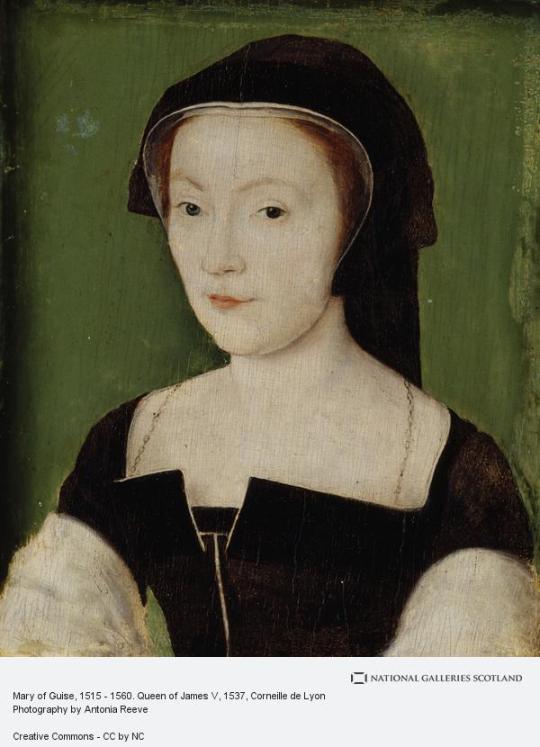

22nd February 1540 saw Marie de Guise crowned Queen Consort of Scotland at Holyrood Abbey in Edinburgh.
James V’s first French bride, Madeleine of Valois, died in the summer of 1537. James had travelled to France to meet his first bride Madeleine but also had the opportunity to meet Mary of Guise. It was reported that Mary of Guise was second in his affections.
Mary avoided the marriage to James’s maternal uncle Henry VIII and went on in May 1538 to marry James by proxy in Paris, and later married him in person after her arrival in Scotland. Mary brought with her a dowry given by Francis I of France, father of James V’s first bride, and it was large enough to be of the same value as a French princess.
Of Mary of Guise, Margaret Tudor, the King’s mother, wrote to her brother Henry VIII, “I trust she will prove a wise Princess. I have been much in her company, and she bears herself very honourably to me, with very good entertaining.” Mary lefte behind her three-year-old son, who was now the Duke of Longueville, the half brother of the future Mary Queen of Scots, in the care of her mother, Antoinette de Bourbon
Mary’s coronation happened on this day 1540. She was pregnant at the time with her first son by King James.
A new crown was made for the occasion, which was set to take place in Holyrood Abbey. Ladies were summoned from all over Scotland to attend. The abbey was hung with tapestries, and items moved for the occasion from the Holyrood Palace chapel to Holyrood Abbey. A thirty-gun salute marked the occasion, and fireworks were lit at the other end of the Royal Mile up the hill at Edinburgh Castle. Mary used a gilded sceptre for the coronation, too.
Mary had a second son in 1541 with James V, and tragically, both of her sons died on the 21st April 1541, the elder boy being not quite a year and the younger being only a few days old.
Mary of Guise was Queen Consort of Scotland for less than five years before her husband died after the Battle of Solway Moss. This famously left the couple’s six-day-old daughter, Mary, as Queen of Scots. Mary of Guise had the Queen of Scots smuggled out of Scotland and to France when the child was about five years old.
Mary of Guise served as regent for her daughter from 1554 until 1560, while the Queen of Scots was being raised at the French court,
She passed away in 1560 and her body was returned to France and given to her sister Renee, abbess of the the church of Saint-Pierre-les-Dames, Reims, where she was interred in July 1561. A marble tomb was erected with a bronze statue of Mary, in royal robes, holding a sceptre and the rod of justice in one hand.
The tomb was destroyed during the French revolution.
19 notes
·
View notes
Text



Sleeping Beauty (1959, Clyde Geronimi, Eric Larson, Wolfgang Reitherman, Les Clark)
15/09/2024
#sleeping beauty#animation#1959#clyde geronimi#Eric Larson#wolfgang reitherman#Les Clark#walt disney#charles perrault#List of Walt Disney Animation Studios films#united states#Walt Disney Studios Motion Pictures#snow white and the seven dwarfs#cinderella#Box-office bomb#the little mermaid#1989#Trés Riches Heures du Duc de Berry#Remake#Spinoff#live action#maleficent#angelina jolie#elle fanning#france#14th century#Queen consort#aurora#Swift#marc davis
6 notes
·
View notes
Text

Maria Pia of Savoy, Queen consort of Portugal
Portuguese vintage postcard, mailed in 1905 to Bordeaux, France
#historic#briefkaart#maria#queen#postkaart#1905#carte postale#ephemera#maria pia#tarjeta#photo#france#postcard#postal#mailed#portuguese#bordeaux#postkarte#savoy#ansichtskarte#consort#portugal#sepia#photography#vintage
3 notes
·
View notes
Text

copying or not, they are both very beautiful
hashtag: they ate
#princess diana#duchess of cornwall#diana frances spencer#diana princess of wales#diana spencer#lady di#lady diana#lady di icons#camilla parker bowles#queen camilla#queen consort#brf#british royal family#british monarchy
10 notes
·
View notes
Text

Detail showing the coronation of Queen Jeanne, from the Coronation Book of Charles V, France (Paris), 1365, Cotton Tiberius B. VIII, f. 68r.
#maison capét#house of capet#capet dynasty#reine de france#queen of france#charles v#consort#medieval France#manuscripts#royalty#french royalty#queen joan of france
1 note
·
View note
Text






THE MATERNAL LINE OF QUEEN JANE GREY
Jacquetta of Luxembourg, Duchess of Bedford and later Countess of Rivers, she was the daughter of Peter I, Count of Saint-Pol. (as portrayed by Janet McTeer in The White Queen) Elizabeth Woodville, Queen Consort of England and Lady of Ireland, she was the daughter of Richard Woodville, 1st Earl of Rivers. (as portrayed by Rebecca Ferguson in The White Queen) Elizabeth of York, Princess of England and later Queen Consort of England and Lady of Ireland, she was the daughter of Edward IV, King of England and Lord of Ireland. (as portrayed by Jodie Comer in The White Princess) Mary Tudor, Princess of England, later Queen Consort of France and then Duchess of Suffolk, she was the daughter of Henry VII, King of Ireland and Lord of Ireland. (as portrayed by Sai Bennett in The Spanish Princess) Frances Brandon, Duchess of Suffolk, she was the daughter of Charles Brandon, 1st Duke of Suffolk (Second Creation). (as portrayed by Anna Chancellor in My Lady Jane) Jane Grey, Queen of England and Ireland, she was the daughter of Henry Grey, 1st Duke of Suffolk (Third Creation) and Marquess of Dorset. (as portrayed by Emily Bader in My Lady Jane)
#the white queen#the white princess#the spanish princess#my lady jane#perioddramaedit#twqedit#twpedit#thespanishprincessedit#myladyjaneedit#my edits#janet mcteer#rebecca ferguson#jodie comer#sai bennett#anna chancellor#emily bader#jacquetta of luxembourg#jacquetta woodville#elizabeth woodville#elizabeth of york#mary tudor#mary rose tudor#frances brandon#frances grey#lady jane grey#jane grey
313 notes
·
View notes
Text
Updated Masterlist
Fluff
King Baldwin IV reaction to drunk reader
King Baldwin IV reaction to reader being injured by her brother in law
Waking up early morning with Baldwin
Baldwin and Salah ad Din's daughter
Baldwin teaching his son chess and reader admiring them slight angst
Reader being married to Baldwin since childhood sharing kiss after Battle of Montgisard
Reader being blackmailed to leave Baldwin
Baldwin celebrating Christmas with reader and his in-laws in modern world
Jealous Baldwin reaction to reader wearing bikini
Baldwin comforting wife!reader after difficult birth
King Baldwin IV x Reader : Tantalizing Love slight angst
Reader teaches Baldwin to cook whilst she is pregnant
Baldwin taking care of pregnant wife reader
King Baldwin IV proposes female reader
(Y/N) gets caught Baldwin IV trying to heal him
Modern Day Baldwin and (Y/N) meeting again after dreaming of each other
Baldwin IV celebrates (Y/N)'s Birthday
Headcanon
Being queen consort of Jerusalem
King Baldwin IV as lover, husband and father
King Baldwin IV being angry at reader
Angst
King Baldwin IV being unfaithful to reader Alternate ending 1 Alternate ending 2
King Baldwin IV has to annul his marriage with reader
Lost Cause
Baldwin choosing between woman and he loves and woman he has to marry
Baldwin reaction to wife!reader trying to cure him
King Baldwin IV being angry at reader Part 1 Part 2
Smut
King Baldwin IV x Reader: Throne Sex
King Baldwin IV x Reader : Misogyny Sex
King Baldwin IV x Reader : Period Sex
King Baldwin IV x Reader: Erotic Night
King Baldwin IV seducing shy physician reader
King Baldwin IV spending honeymoon night with reader
Reader asking Baldwin help for her lactating breasts
Baldwin and chubby wife!reader trying anal sex
King Baldwin IV x Small!Reader Smut : Size Kink
Baldwin IV and Salahuddin's daughter (y/n) having sex for first time before their first battle
Baldwin IV being pervert towards (Y/N)
Baldwin and Salahuddin
King Baldwin IV x Reader x Saladin Part 1 Part 2 smut
Widowed reader marries Salahuddin angst
Salahuddin
Reader spoils him and loves being near him
Horror
Spectral Descent
History
A letter from King Baldwin IV and Princess Sibylla of Jerusalem Source: https://epistolae.ctl.columbia.edu/letter/25233.html
King Baldwin IV of Jerusalem appearance-STUDY by MariaExe on DeviantArt.com Artist- MariaExe on DeviantArt
King Baldwin IV appearance based on historical painting Part 1 Part 2
A letter From King Baldwin IV of Jerusalem to King Louis VII of France Source: Bernhard Hamilton -The Leper King and his heirs
LETTER FROM KING BALDWIN IV TO THE ENVOYS WITH NEWS OF SALADIN RAVAGES NABLUS, SEBASTE, AND OTHER TOWNS
Source:https://goodshksk.space/product_details/13546547.html
A Letter of Condolence to King Baldwin IV from Saladin Source: https://advocatetanmoy.com/2023/10/14/saladins-condolence-letter-to-king-baldwin-iv-of-jerusalem/
Seal of King Baldwin IV of Jerusalem Source:https://numismatics.org/collection/1956.152.1
Medieval Heroes: Baldwin IV
Miscellaneous
Would Baldwin be attracted to chubby and short person
Would Baldwin be unfaithful historically
Salahuddin: The conqueror of Jerusalem series King Baldwin IV
Would Baldwin be obsessive or possessive
Would Baldwin be impotent and would he be able to have sexual relationship
Can Baldwin be able to have sexual relationship: Revised Version
Did Historical Baldwin wear a mask and dress like the movie Kingdom of Heaven
Blurbs
NSFW thoughts
As Life Fades Sibylla remembers Baldwin IV
#kingdom of heaven#kingdom of heaven 2005#kingdom of heaven fandom#kingdom of heaven fanfic#kingdom of heaven fanfiction#kingdom of heaven headcanons#baldwin iv#baldwin iv imagine#baldwin iv x reader#king baldwin iv
392 notes
·
View notes
Text
During [the spring and summer of 1141], a number of contemporary narrative sources agreed that Matilda’s sudden and unexpected success went straight to her head. Matilda’s most renowned modern biographer has suggested that “conduct acceptable in a powerful king . . . was not acceptable in a ‘Lady of the English’. This line of reasoning can be taken quite a bit further. It is clear that contemporaries expected Matilda to emulate the behavior of those women who had previously held the rank of regina, and act like a queen consort while performing the office of king. Most queens consort, however, did not have to consolidate recognition of their position as Matilda was constrained to do. Nearly all the chroniclers who had marveled at her assumption of power turned on her immediately. Not surprisingly, the Gesta Stephani took the greatest exception:
She at once put on an extremely arrogant demeanor instead of the modest gait and bearing proper to the gentle sex, began to walk and speak and do all things more stiffly and more haughtily than she had been wont.
But other more sympathetic chroniclers also joined this chorus of disapproval: Henry of Huntington described her as “elated with insufferable pride” while the Worcester chronicler noted her “hard heart” as she strove to consolidate her position. Had she been a man, Matilda’s decidedly authoritarian style might have passed for a regal show of strength. Indeed, Matilda probably felt that if she was to hold on to her newly acquired status, she needed to behave like a king. Thus, Matilda’s forward movement from recognition of her status to the execution of her office was fraught with gendered difficulties concerning how a woman ought to conduct herself.
...As she anticipated her crowning, Matilda strove to consolidate her dynastic claims and establish her authority. It seems reasonable to suppose that Matilda looked to her father and her first husband for examples of successful kingship as she did for representational purposes. Both Emperor Henry V and King Henry I were suspicious, uncompromising, relentless, and ruthless in the pursuit of their aims. Probably both would have advised Matilda to follow their example. This was exactly what St. Bernard told Queen Melisende of Jerusalem following the death of her husband: “show the man in the woman; order all things . . . so that those who see you will judge your works to be those of a king rather than a queen.” Much of Matilda’s behavior during the spring and summer of 1141 can be explained as the emulation of male gendered kingship. But kings had the built-in advantage of female consorts to soften the more hardboiled aspects of their rule; Matilda had played that very role herself for her first husband. Nevertheless, in 1141, Matilda eschewed the feminine aspects of queenship completely, in effect negating what could have been useful symbolism to bolster the construction of her authority. But for Matilda to be perceived as a soft, forgiving, and gentle woman at the one moment she needed to consolidate her position at the top of a male dominant political society would not have been practical.
But by constructing herself as a female feudal lord, and emulating male gendered kingship, Matilda annoyed contemporary observers. The chroniclers’ hostility may have been due to the fact that Matilda was claiming kingly sovereignty for herself alone, and not in association with either her husband or her eldest son. The Gesta Stephani described Matilda as not only arrogant, but also spurning the advice of her chief advisors, the earl of Gloucester, her uncle King David of Scotland, and the “kingmaker” himself, the Bishop of Winchester. The Gesta implied that if Matilda had behaved as a deferential woman, and heeded the counsel of her male advisors, she could have devised a means to permanently depose Stephen, and be crowned and anointed in his place. The Gesta placed Matilda’s ultimate failure at her own door, blaming it on her arrogant reliance on her inferior, womanly intellect and emotions.
Matilda’s hard-line stance, acceptable in a male king, bothered the authors of the Worcester chronicle and the Gesta, suggesting that contemporaries were confused by what they wanted the “Lady of the English” to do, indicating that, as a woman and a domina, she should behave gently like a queen rather than forcefully like a king. Combined, all the chroniclers, with the exception of Malmesbury, suggested that Matilda should have used the intercessory powers of queenship to set Stephen free, moderated the harsher aspects of her father’s rule, and excused the Londoners from financial support. Although a more diplomatic approach might have helped, freeing Stephen at that moment in time would have realistically served no practical purpose in establishing Matilda’s authority. And, in denying Eustace his inheritance, Matilda was only imitating the efforts of her father, Henry I, who also dealt harshly with challengers to his throne. Henry I kept his elder brother Robert Curthose in prison until he died, and prevented his nephew, William Clito, Curthose’s heir, from gaining any aspect of the Anglo-Norman inheritance. Matilda wished to convince her contemporaries that she was quite capable of being a king, but their reactions betrayed hostility toward her as a woman presuming to establish kingly authority.
-Charles Beem, "Empress Matilda and Female Lordship", The Lioness Roared: The Problems of Female Rule in English History"
#i got an ask about this topic a few hours ago so here you go!#historicwomendaily#empress matilda#the anarchy#12th century#english history#queenship tag#my post#queue#I really dislike the way most general histories talk about Matilda and frame her actions#Even when they begin on a sympathetic note they still emphasize how she had a 'difficult personality' and sabotaged herself#...did she? because her father and her son behaved exactly the same and it worked out for them#'She should've just been more compliant and LISTENED to people' - and then she would have been viewed as weak and pliant.#There is very little compassion for her extremely complicated situation and how gendered expectations & misogyny were almost entirely#responsible for how contemporaries perceived and judged her#This pattern is also evident with historians' frustrating tendency to compare Matilda (a REGNANT) to Stephen's queen Mathilde (A CONSORT)#even though their roles and expectations were entirely different#Matilda is often compared to other English consorts (Isabella of France; Eleanor of Aquitaine; Margaret of Anjou) as well#which makes even less sense and is 10x frustrating#Matilda - as female king in her own right with a contested claim - was in a very unique and anomalous situation#and any attempt to compare her to consorts ends up downplaying and misunderstanding her situation#I've noticed a similar pattern with Jeanne de Penthievre (female claimant of Brittany) where her role and authority is often compared#to her rival claimant's consort Joanna of Flanders#Which – once again – is entirely illogical as both women had entirely different roles and expectations and authority
21 notes
·
View notes
Text
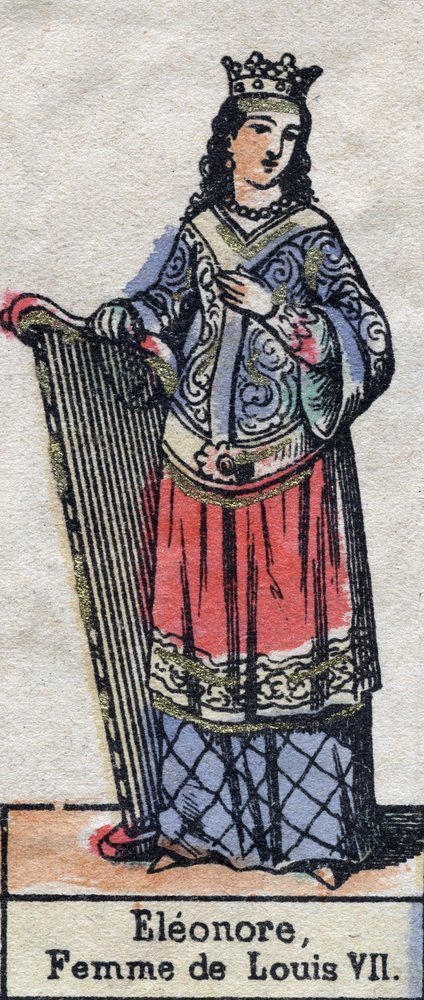
Aliénor d'Aquitaine (1122-1204).
#Capetian dynasty#reine des francs#vive la reine#aliénor d'aquitaine#duchesse d'aquitaine#Duchesse de Normandie#comtesse d'Anjou#maison de poitiers#eléonore d'aquitaine#reine d'angleterre#full length portrait#reine de france#royaume de france#duché d'aquitaine#eleanor of aquitaine#duchess of aquitaine#kingdom of england#kingdom of france#queen consort#full-length portrait
4 notes
·
View notes
Text

Louise Henriette Leads Friedrich Wilhelm, Elector of Brandenburg, to Her Parents
Artist: Gerard van Honthorst (Dutch, 1592–1656
Date: 1649
Medium: OIl on Canvas
Louise Henriette of Nassau (Dutch: Louise Henriëtte van Nassau, German: Luise Henriette von Nassau; 7 December 1627 – 18 June 1667) was a Countess of Nassau, granddaughter of William I, Prince of Orange, "William the Silent", and an Electress of Brandenburg.
Louise Henriëtte was born in The Hague, the eldest daughter of Frederick Henry, Prince of Orange, and Amalia of Solms-Braunfels. She grew up at the court of her father, the Stadtholder of Holland, Zeeland, Utrecht, Guelders and Overijssel.
Marriage
Louise Henriëtte had to abandon her love for Henri Charles de La Trémoille, Prince of Talmant, son of Henry de La Trémoille, as her mother had royal ambitions for her. However, attempts to conclude an engagement with King Charles II of England came to nothing. Finally she was forced to marry Frederick William, Elector of Brandenburg (1620-1688), "the Great Elector," at The Hague on 7 December 1646, her nineteenth birthday, on the proposal of the Brandenburg diplomat Joachim Friedrich von Blumenthal.
#symbolism#king#frederick william#european#european nobility#oil painting#angel#landscape#17th century painting#dutch painter#southern france#french nobility#history#queen consort
5 notes
·
View notes
Text

FRANCES GREY, DUCHESS OF SUFFOLK, MOTHER OF A QUEEN
Born Frances Brandon, named after St. Francis of Assisi but also in honour of the King of France, Francis I, who was once the stepson-in-law of her mother and who had granted the marriage of her parents. Daughter of Charles Brandon, 1st Duke of Suffolk and Mary Tudor, Princess of England and Dowager Queen of France, she was the eldest daughter of her parents' union and after the death of her brother their eldest child. Sister to Eleanor Clifford, later Countess of Cumberland. She had two full brothers one elder and one younger, who did not reach adulthood. By her father, she had four half-siblings, like her full brothers her younger brothers did not reach adulthood. Granddaughter of Henry VII, King of England and Elizabeth of York, Queen of England. Making her the niece of Henry VIII, King of England and per the Act of Succession 1536 the first person in line for the English throne outside of her uncle's marriages, as her mother's heirs took precedence over her Scottish cousins who were through her aunt - the elder of Henry VII's daughters - Margaret, Queen of Scotland's line. Her first marriage was to Henry Grey, initially Marquess of Dorset who later acceded the Dukedom of Suffolk after her father's death. Henry Grey was related through their common ancestress Elizabeth Woodville, Queen of England, Henry through Elizabeth's first marriage and Frances through her second. Her second husband was Adrian Stokes, the Master of the Horse to her cousin Mary I. Mother to Jane Grey, Queen of England for nine days (technically thirteen if you take the date of the death of Edward VI) who was made heir by Edward VI brushing over Frances's own claim. Also, the mother to Katherine Grey and Mary Grey, who at times during Elizabeth I's reign were considered viable heirs by the court. She had a loving relationship with her stepmother Catherine Willoughby and socialized in the same circles, including the protestant circles of her uncle's latter reign and her cousin Edward's reign. Beloved friend to her Aunt by marriage Catherine Parr, Queen of England who was also a good friend of her stepmother. Friend to her cousin Mary I, even after Mary had put her Husband, Daughter and son-in-law to death. Mary, Frances and their cousin - through their aunt Margaret, Queen of Scotland - Margaret Douglas were all close in age and brought up in the court of Henry VIII. Mary ended up on the throne, with Frances being the mother of a Queen and Margaret being the mother of a King Consort of Scotland and later the grandmother of James I, King of England.
[Anna Chancellor as Lady France Grey, in Amazon Prime's My Lady Jane]
#my lady jane#myladyjaneedit#perioddramaedit#anna chancellor#frances grey#frances brandon#original edit#edit#show: my lady jane
161 notes
·
View notes
Photo


On 22nd February 1540 Marie de Guise was crowned Queen Consort of Scotland at Holyrood Abbey in Edinburgh.
Marie was pregnant with her first son by James V, who was born in May of 1540. A new crown was made for the occasion, and Ladies were summoned from all over Scotland to attend, by ladies I do mean the wives and daughters of the nobility!
The abbey was hung with tapestries, and items moved for the occasion from the Holyrood Palace chapel to Holyrood Abbey. A thirty-gun salute marked the occasion, and fireworks were lit just up the hill at Edinburgh Castle. Mary used a gilded sceptre for the coronation, too.
Mary had a second son in 1541 with James V, and tragically, both of her sons died on the 21 April 1541, the elder boy being not quite a year and the younger being only a few days old. Mary of Guise was Queen Consort of Scotland for less than five years before her husband died after the Battle of Solway Moss. This famously left the couple’s six-day-old daughter, Mary, as Queen of Scots. Mary of Guise had the Queen of Scots smuggled out of Scotland and to France when the Queen of Scots was about five years old. Mary of Guise served as regent for her daughter from 1554 until 1560, while the Queen of Scots was being raised at the French court. Mary of Guise passed away in 1560, and her body was taken to France for burial some months later.
9 notes
·
View notes